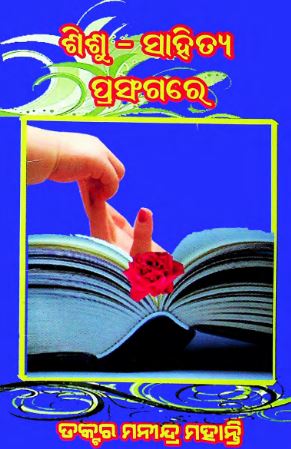In the realm of Odia literature, one significant contribution that stands out is “Sisu Sahitya Prasangare,” authored by Manindra Mohanty and published in 2012. This book serves as an insightful compilation of essays focused on children’s literature, a genre that has been gaining traction yet often remains underexplored. Mohanty’s dedication to promoting children’s literature in the Odia language not only highlights the importance of nurturing young minds but also emphasizes the cultural richness embedded within Odia storytelling traditions.
“Sisu Sahitya Prasangare” emerges as a critical voice in understanding the landscape of children’s literature in Odisha. It delves into various dimensions, such as the role of fairy tales, fables, and folk stories, showcasing how these narratives can influence the cognitive and emotional development of children. The essays explore the transformative power of literature, emphasizing how stories can impart moral values, cultural heritage, and a sense of identity to the younger generation.
One of the remarkable aspects of Mohanty’s compilation is his ability to weave personal anecdotes with broader literary critiques. By sharing his experiences as both a reader and a writer, he creates a relatable narrative that resonates with educators, parents, and young readers alike. The essays illuminate the need for quality children’s literature in Odia, encouraging writers, illustrators, and publishers to prioritize this essential genre. Mohanty’s advocacy for children’s literature underscores that it is not merely a subset of writing but an influential medium that shapes thoughts, imaginations, and futures
Furthermore, “Sisu Sahitya Prasangare” examines the evolution of children’s literature in Odisha, tracing its roots from ancient folktales to contemporary writings. Mohanty emphasizes how socio-political changes over the years have impacted storytelling styles and themes. He discusses the increasing relevance of modern-day issues—such as environmental concerns, gender equality, and digital literacy—within children’s narratives, asserting that literature must evolve alongside societal changes.
The book also addresses practical considerations for aspiring children’s authors. Mohanty provides insights into the craft of writing for children, including the importance of simplicity, vivid imagery, and relatable characters. He encourages writers to tap into the rich cultural heritage of Odisha, utilizing local folklore and traditions to create stories that educate while entertaining. This emphasis on local culture not only enriches the narratives but also instills a sense of pride and belonging among young readers.
“Sisu Sahitya Prasangare” is not just a compilation of essays; it is a clarion call for the cultivation of a robust children’s literature scene in Odisha. By fostering a love for reading and storytelling, Mohanty’s work paves the way for future generations to engage with their language and culture meaningfully. In an age dominated by digital media, his emphasis on the importance of books reminds us of the timeless value of literature in shaping young minds.
In conclusion, Manindra Mohanty’s “Sisu Sahitya Prasangare” is a profound contribution to Odia literature that nurtures a dialogue around children’s literature. It serves as both a resource and an inspiration for parents, educators, and writers, encouraging them to invest in the literary lives of children. By prioritizing quality narratives and cultural authenticity, Mohanty’s work is instrumental in enriching the tapestry of Odia literature for young readers.
Books Info
| Books name | Sisu Sahitya Prasangare |
| Author | Manindra Mohanty |
| No Of pages | 134 |
| Publisher | Aparnna Prakashani |
| Publication | 2012 |
| Printed At | Dibya Mandira |
| Distributor | NA |

